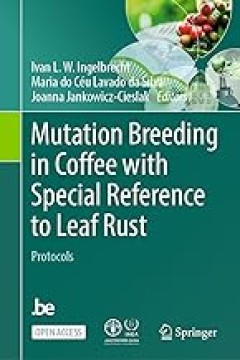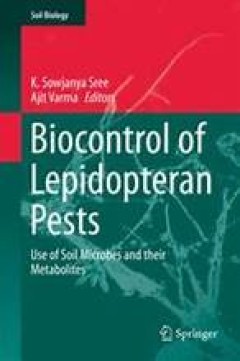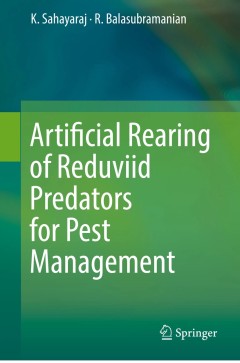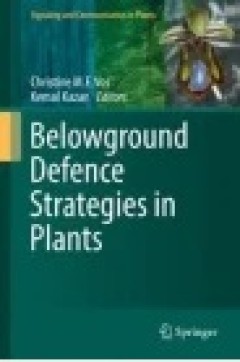Filter by

Mutation Breeding and Efficiency Enhancing Technologies for Resistance to Str…
This open access book is a compilation of protocols developed through a Coordinated Research Project of the Joint FAO/IAEA Center of Nuclear Techniques in Food and Agriculture, specifically focused on mutation breeding for resistance to Striga. The book consists of three sections; (i) a general introduction on Striga biology and impact and mutagenesis in cereal crops; (ii) protocol chapters foc…
- Edition
- -
- ISBN/ISSN
- 978-3-662-68181-7
- Collation
- X, 182
- Series Title
- -
- Call Number
- -

Critical Points for the Organisation of Test Performance Studies in Microbiol…
This open access book in the field of plant pest detection shows a constant demand in development and improvement of fast and reliable detection tools, especially for high-priority pests. This open access book describes and summarizes the whole process of the organization of test performance study (TPS) for these tools. The outcome of TPS, obtained through the evaluation of the performance of o…
- Edition
- -
- ISBN/ISSN
- 978-3-030-99811-0
- Collation
- XIV, 97
- Series Title
- Plant Pathology in the 21st Century (ICPP, volume 12)
- Call Number
- 570 CRI

Efficient Screening Techniques to Identify Mutants with TR4 Resistance in Banana
Bananas are a staple food for over 500 million people and are also an important cash crop. Fusarium wilt, caused by the fungus Fusarium oxysporum f.sp. cubense, is one of the most destructive diseases of banana globally. Since the 1990s, an aggressive variant of this fungus, called Tropical Race 4 (TR4), severely affected banana plantations in Southeast Asia from where it spread to other contin…
- Edition
- 1
- ISBN/ISSN
- 978-3-662-64915-2
- Collation
- -
- Series Title
- -
- Call Number
- XVI, 187

Mutation Breeding in Coffee with Special Reference to Leaf Rust
This open-access book provides a comprehensive overview of current methodologies for improving resistance to leaf rust in coffee, one of the world's most important cash crops and beverages. Coffea arabica L. (Arabica) accounts for about 60% of the world's coffee production. Coffee leaf rust (CLR), caused by the fungus Hemileia vastatrix is the major disease affecting Arabica coffee resulting in…
- Edition
- -
- ISBN/ISSN
- 978-3-662-67272-3
- Collation
- XX, 314
- Series Title
- -
- Call Number
- -

Biocontrol of Lepidopteran Pests
This volume describes the various applications of entomopathogenic soil microorganisms in the management and control of the devastating lepidopteran pest. An introduction describes the insecticidal properties of viruses, bacteria, fungi, nematodes and their metabolites, as well as their applications in the context of crop improvement. Subsequent chapters focus on topics such as insecticidal pro…
- Edition
- 1
- ISBN/ISSN
- 978-3-319-14499-3
- Collation
- Biologi
- Series Title
- Soil Biology
- Call Number
- 570

Artificial Rearing of Reduviid Predators for Pest Management
This eye-opening book focuses on the development of techniques to mass-produce reduviid predators and important generalist predators, an endeavor that won’t prove sufficient if the cost of commercialization is prohibitive. Advancing mass production to the level of economic feasibility is critical, so that these new technologies can compete in the open market. This book commences with a rev…
- Edition
- Ed. 1
- ISBN/ISSN
- 978-981-10-2522-8
- Collation
- XVI, 180
- Series Title
- -
- Call Number
- 630 BAL a

Rhizomania
The knowledge of ecology and epidemiology of rhizomania is particularly useful to understand the means and practices able to limit or avoid its further diffusion. Some promising methods of biological control using coexisting and non-pathogenic organisms could potentially help improve the action of the not completely effective genetic resistances. This integrated protection would be valuable, es…
- Edition
- Ed. 1
- ISBN/ISSN
- 978-3-319-30678-0
- Collation
- -
- Series Title
- -
- Call Number
- -

GTPases Versatile Regulators of Signal Transduction in Plants
G proteins are the key regulators for a wide range of cellular processes in animals and plants. In comparison to animals and yeast, plants have a single Rho-GTPase subfamily called Rho-like GTPases (ROPs). The ROP family of monomeric GTPases has emerged as a versatile and key regulator in plant signal transduction processes. During the past few years’ studies on plant RHO-type (ROP) GTPase ha…
- Edition
- -
- ISBN/ISSN
- 978-3-319-11611-2
- Collation
- -
- Series Title
- -
- Call Number
- -

Alternaria Diseases of Crucifers: Biology, Ecology and Disease Management
This book deals with the various aspects viz., the disease, geographical distribution, symptoms on different hosts, host range, yield losses, and disease assessment method, while detailed description on pathogen include taxonomic position, phylogeny, variability, sporulation, perpetuation, and spore germination, host-parasite interactions in the form of seed infection, disease cycle, process of…
- Edition
- Ed. 1
- ISBN/ISSN
- 978-981-10-0021-8
- Collation
- XXXVII, 299
- Series Title
- -
- Call Number
- 630 SAH a

Belowground Defence Strategies in Plants
This book summarizes our current knowledge on belowground defence strategies in plants by world-class scientists actively working in the area. The volume includes chapters covering belowground defence to main soil pathogens such as Fusarium, Rhizoctonia, Verticillium, Phytophthora, Pythium and Plasmodiophora, as well as to migratory and sedentary plant parasitic nematodes. In addition, the role…
- Edition
- -
- ISBN/ISSN
- 978-3-319-42319-7
- Collation
- VIII, 410
- Series Title
- -
- Call Number
- 571.2
 Computer Science, Information & General Works
Computer Science, Information & General Works  Philosophy & Psychology
Philosophy & Psychology  Religion
Religion  Social Sciences
Social Sciences  Language
Language  Pure Science
Pure Science  Applied Sciences
Applied Sciences  Art & Recreation
Art & Recreation  Literature
Literature  History & Geography
History & Geography